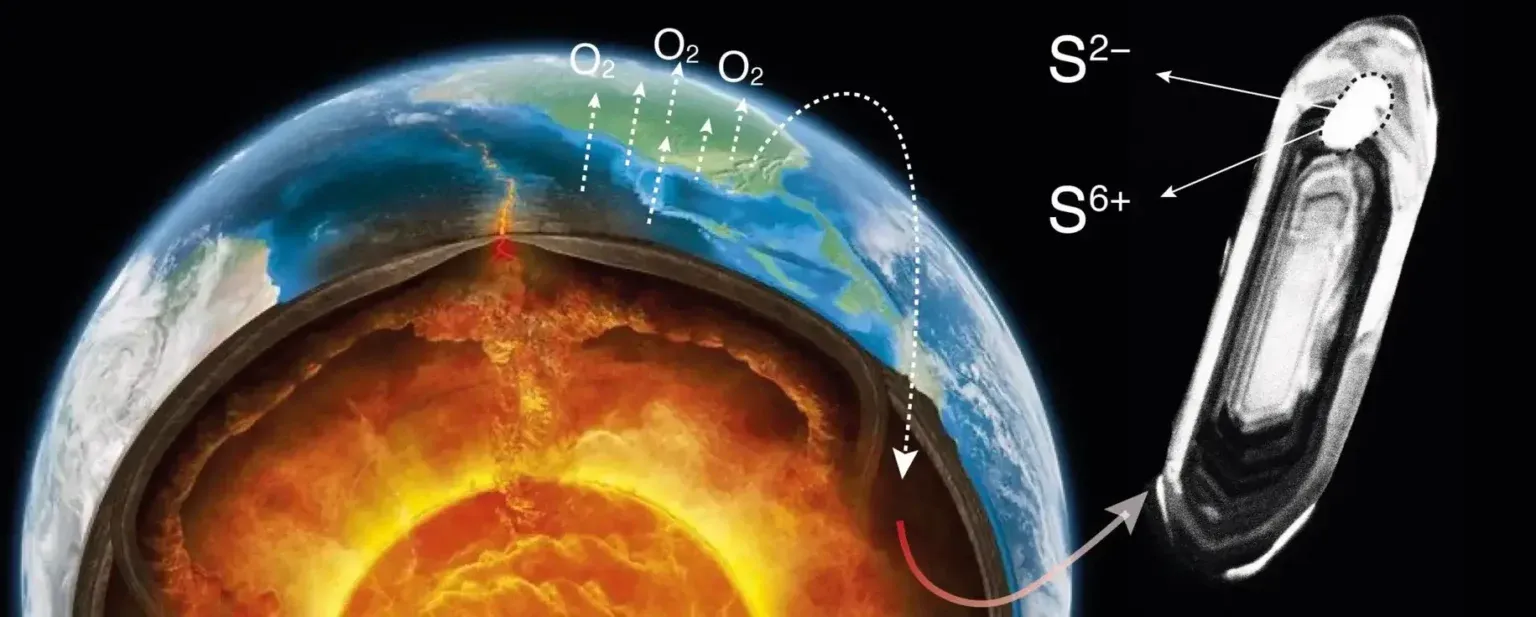In a pioneering study, scientists have used synchrotron techniques to shed light on one of the most significant events in Earth’s history, the Great Oxidation Event. This event, which occurred about 2.4 billion years ago, was a turning point in the composition of our planet’s atmosphere, which ultimately determined the development of complex life forms and led to the transformation of Earth’s ecosystems.
Understanding plate tectonics and the Earth’s chemical composition
Plate tectonics plays a critical role in the cycling and exchange of elements between the Earth’s surface, atmosphere, and mantle. Mountains undergo weathering and erosion through interaction with water and the atmosphere and break down to become sedimentary rocks. These sediments are then partially returned to the mantle by subduction processes as one tectonic plate dips beneath another. The formation of magmas in the mantle above subduction zones provides a unique opportunity to investigate how the atmosphere may have influenced the mantle by assimilating materials from subducted sediments and provides valuable insights into this complex geologic relationship.
Apatite inclusions in zircon crystals: Unlocking the secrets
To unravel the mysteries of the Great Oxidation Event, scientists have turned their attention to apatite inclusions in zircon crystals found in ancient magmas. These inclusions represent a window into the past, providing valuable information about the redox state of the environment during this critical period. Studying these inclusions using synchrotron techniques at ESRF – Extremely Brilliant Source – allowed researchers to analyze the valence characterization of sulfur and gain insight into the atmospheric conditions that influenced the state of the mantle.
Overcoming challenges with innovative techniques
Studying the interaction between Earth’s atmosphere and mantle is not an easy task, especially given the rapid changes that occurred during the early stages of Earth’s development. However, a team led by the University of Montpellier and the University of Portsmouth, in collaboration with ESRF, has developed a method to overcome these difficulties. By studying apatite inclusions in zircon crystals, they were able to obtain valuable information about redox conditions during the Great Oxidation Event.
Hugo Moreira, CNRS postdoctoral fellow at the University of Montpellier and first author of the paper, explains the significance of the findings, “Apatite is an indirect indicator of redox conditions. When it grows under reduced conditions, its sulfur signature differs from that crystallized under oxidized conditions. Analyzing the valence composition of sulfur in apatite inclusions allows us to understand the changing redox state of magmas and the influence of atmospherically altered precipitation percolating into the mantle.”
Implications of the study
The results of this study have far-reaching implications for our understanding of Earth history and the development of life on our planet. By uncovering crucial information about the Great Oxidation Event, scientists will be able to piece together the puzzle of how oxygen accumulated in the atmosphere and how it influenced the evolution of complex multicellular life forms. This study emphasizes the importance of interdisciplinary research and innovative methods in unlocking the mysteries of our planet’s past.
– “Apatite is an indirect indicator of redox conditions. When it grows under reduced conditions, its sulfur signature is different from that which crystallizes under oxidized conditions.” – Hugo Moreira, CNRS postdoctoral fellow at the University of Montpellier.
